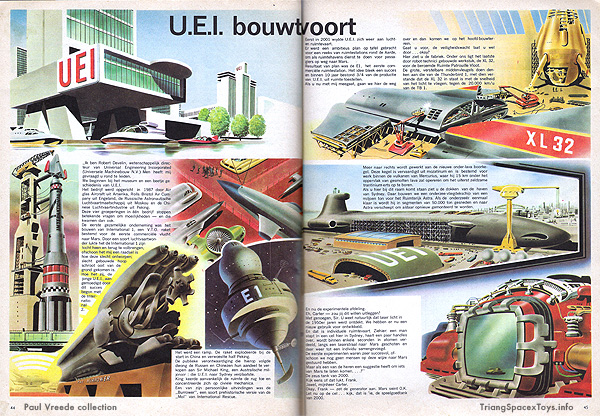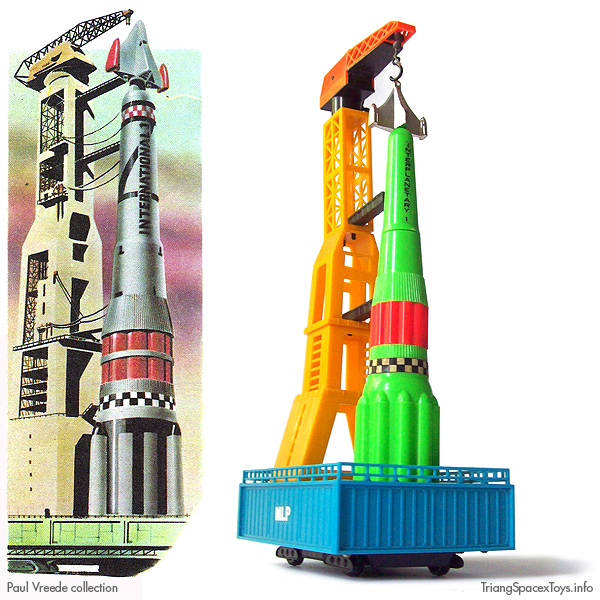
The origin for the Mobile Launching Pad is the International 1 rocket, which appears in a feature illustrated by Eric Eden, published in the TV21 Summer Extra issue of 1966. It was subsequently republished in the Dutch Thunderbirds Extra 2 annual, which is where I found it long ago, along with the Needle Probe and Nuclear Pulse on another page.
The feature is a guided tour of Universal Engineering Incorporated, and mentions (some of) the machinery illustrated on the spread. The International 1 rocket, although mentioned as making a successful trip to Mars and back, is still described as a "badly designed, badly built piece of junk." This bad press doesn't appear to have stopped Raphael Lipkin from turning it into a very nice toy!
Eric Eden did draw some inspiration from real life for this illustration. His rocket is shown sitting on a mobile platform with caterpillar tracks, together with an umbilical tower topped by a hammerhead crane (below right). Eden's umbilical tower looks a lot more solid than the latticed towers used in reality, but, other than having a more distinctive tower, I suspect having less lattice saved an enormous lot of masking for the airbrush work.
International 1 looks more like earlier Saturn boosters (below centre), where the lower-stage engines weren't faired over as on the Saturn V. Shuttle-like payloads had been very common in spacecraft concepts prior to capsules being used in real life. Even as late as 1962, the X-20 Dyna-Soar was under extensive development to go into space atop a Titan rocket before the project got cancelled for various reasons (below left).
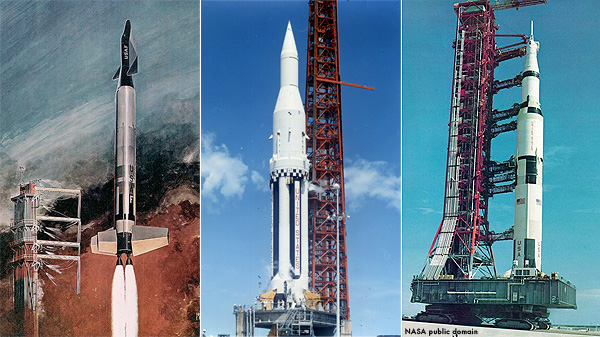
X-20 Dyna-Soar (1961); Saturn I (1962-3); Saturn V on Mobile Launcher Platform (from 1967)
Mobile Launching Platforms hadn't been used yet in 1966, but Eden will certainly have seen Bruce McCall's painting of one, published in Life magazine in 1964 (below).
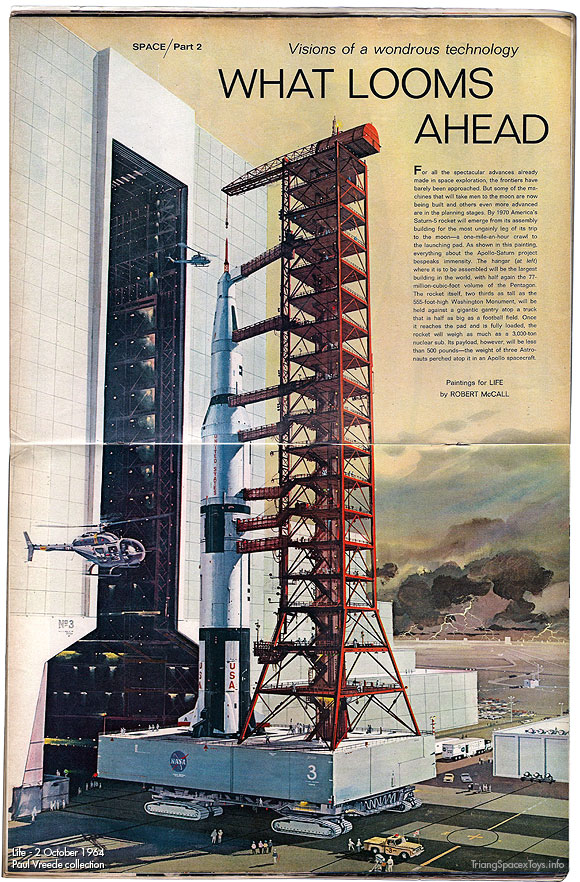
Chicken, egg or coincidence?
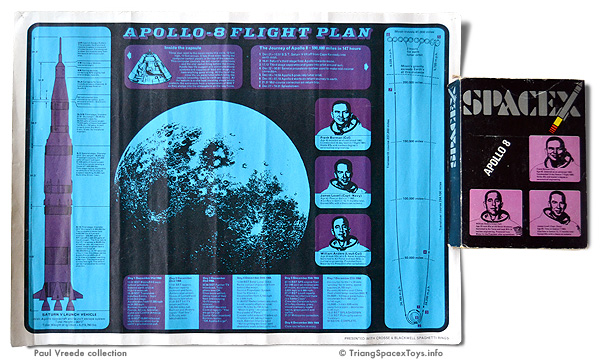
The poster above was a promo with Crosse & Blackwell spaghetti rings. It shows details about the Apollo 8 mission, spacecraft and astronauts. With the portraits of the latter looking remarkably alike to those pictured on the back of the Spacex MLP box, and with captions that are identical.
So is one a copy of the other? Well, other than thinking that a poster is quicker to get out onto the market than the packaging of a toy, and the poster being a more extensive document, I wouldn't really know. Then again, the portraits on the box have more complete flags on their shoulders. So just maybe both could be derived from a NASA press release perhaps. Anybody's guess right now. :)
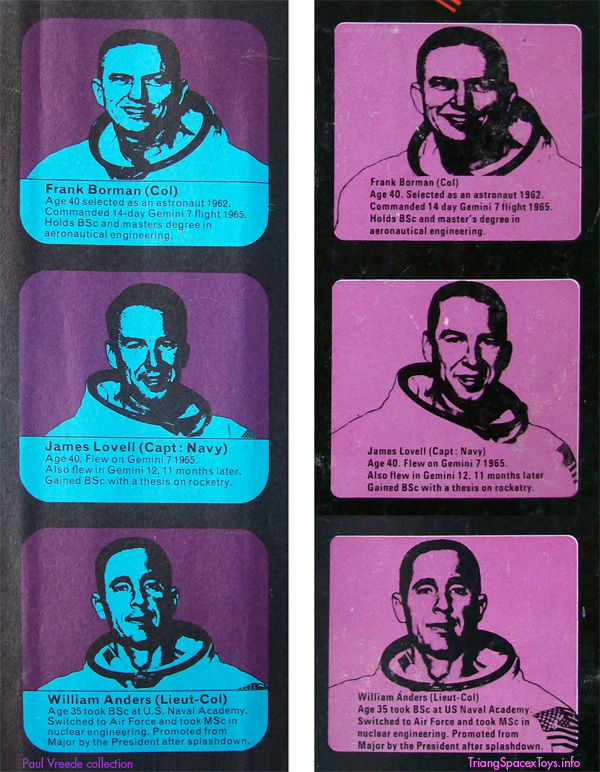
Note: as Paul Woods discovered, McCall's original painting is now at the Smithsonian. (The link in the blog post no longer works, the one here does. - open in new windows)
